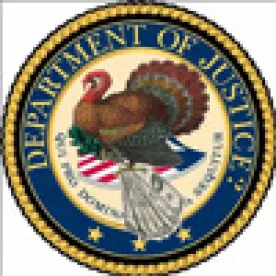Summary
On Friday, January 13, 2017, the Department of Justice (DOJ) and Federal Trade Commission (FTC) released the new Antitrust Guidelines for International Enforcement and Cooperation. These guidelines were jointly developed by the agencies and serve to update the Antitrust Enforcement Guidelines for International Operations that have been in place since April 1995. The new guidelines include a revised discussion on conduct involving foreign commerce, a new chapter on international cooperation, and updated language, case law, and illustrative examples throughout.
In Depth
On Friday, January 13, 2017, the Department of Justice (DOJ) released the new Antitrust Guidelines for International Enforcement and Cooperation. These new guidelines, developed jointly by the DOJ and the Federal Trade Commission (FTC), update the 1995 Antitrust Enforcement Guidelines for International Operations. According to Acting Assistant Attorney General Renata Hesse, who oversees the DOJ’s Antitrust Division, the changes “reflect developments in the department’s practices and in the law over the last 22 years.” The new guidelines include a revised discussion on conduct involving foreign commerce, a new chapter on international cooperation and updated language, case law, and illustrative examples throughout.
Background
On November 1, 2016, DOJ and FTC issued proposed revisions for public comment. Practitioners, economists and international groups provided comments, with the most comprehensive coming from the Cartels Working Group of the Antitrust Committee of the International Bar Association, the American Antitrust Institute and the American Bar Association’s Antitrust Law and International Law Sections. The FTC approved the 2017 Guidelines by a 3-0 vote.
The new 2017 Guidelines summarize the DOJ and FTC's practices for international antitrust investigation and enforcement. The Guidelines do not introduce new concepts, practices or legal interpretations, and no antitrust policy has changed as a result of the release of this document. Although a significant portion of the 2017 Guidelines remain the same as the 1995 Guidelines, there are some important updates.
Updates to the Guidelines
First, the 2017 Guidelines have updated the discussion of the application of US antitrust law to foreign conduct, an evolving and relatively controversial area of the law. According to the DOJ's press release, these updates were made in response to developments in the law and in FTC and DOJ practice.
The 2017 Guidelines discuss the need for a "sufficient connection between the anticompetitive conduct and the United States such that the federal antitrust laws apply and [US] enforcement would redress harm or threatened harm to US commerce and consumers." The analysis of conduct involving foreign commerce involves the FTAIA, the exact wording of which is outlined on pages 17–18 of the 2017 Guidelines. The FTAIA requires that 1) the conduct at issue have a "direct, substantial, and reasonably foreseeable effect" on specific trade or commerce or export trade or export commerce; and 2) such an effect gives rise to a claim under Sections 1 or 7 of the Sherman Act.
Compared to the 1995 Guidelines, the 2017 Guidelines add a discussion of US federal courts' differing views concerning whether the FTAIA goes to a claim's merits or a court's subject-matter jurisdiction. However, the 2017 Guidelines state that this difference of opinion among the federal courts will not affect decisions by the DOJ or FTC on whether to proceed with an investigation or enforcement action because the agencies will not proceed in either case—when the FTAIA precludes the claim on the merits or the FTAIA results in no jurisdiction by the court.
In the same section, the 2017 Guidelines also update the discussion of the differences between import commerce and non-import foreign commerce, and include new illustrative examples (pp. 19–25). Unlike the prior guidelines, the 2017 Guidelines also include a discussion of the requirement that the effect on certain commerce "gives rise to" a claim under the antitrust laws. This "gives rise to" wording has been addressed in a number of cases since the 1995 Guidelines, which are now cited on pages 25–26 of the 2017 Guidelines.
After submitting the 2017 proposed Guidelines for public comment, the DOJ and FTC received a number of comments on the FTAIA section, including from the groups named above. As a result of these comments, the agencies made certain changes in the document including, but not limited to, clarifying the document’s trade or commerce language in the Corporate Leniency Policy restitution to victims section (p. 26, fn 100), and adding the Motorola Mobility LLC v. AU Optronics Corp., 775 F.3d 816 (7th Cir. 2014) case citation to the “gives rise to” discussion.
Second, the 2017 Guidelines contain a new chapter on international cooperation (Sec. 5). The chapter includes a section on investigations and cooperation—including discussions of the FTC and DOJ’s investigative tools, confidentiality safeguards, the legal bases for cooperation, types of information exchanged and waivers of confidentiality and remedies—and a section on special considerations in criminal investigations.
Third, the FTC and DOJ have updated the illustrative examples that appear throughout the guidelines in order to bring them up to date and highlight the most common situations that may arise.
Finally, the agencies have updated wording throughout the document to reflect developments in case law, and the new Guidelines also contain new sections on the Antitrust Criminal Penalty Enhancement and Reform Act of 2004 (Sec. 2.5), the International Antitrust Enforcement Assistance Act (Sec. 2.6) and consolidate the countervailing and antidumping sections of the previous guidelines into a section on the Trade Act of 1974, Section 301 (Sec. 2.11).




 />i
/>i

